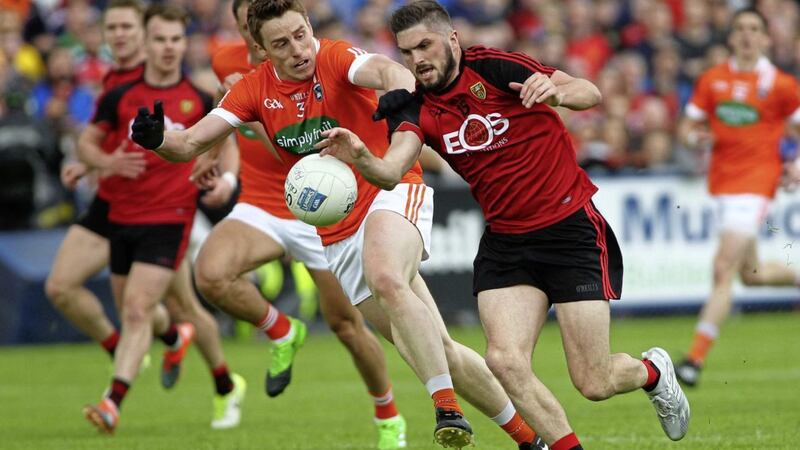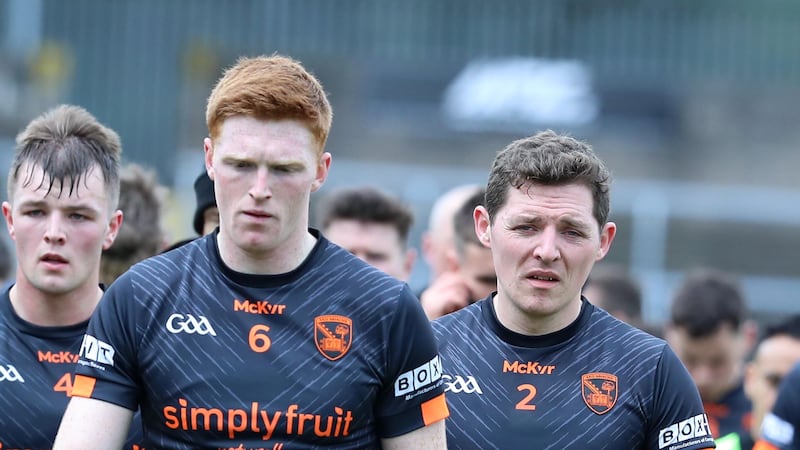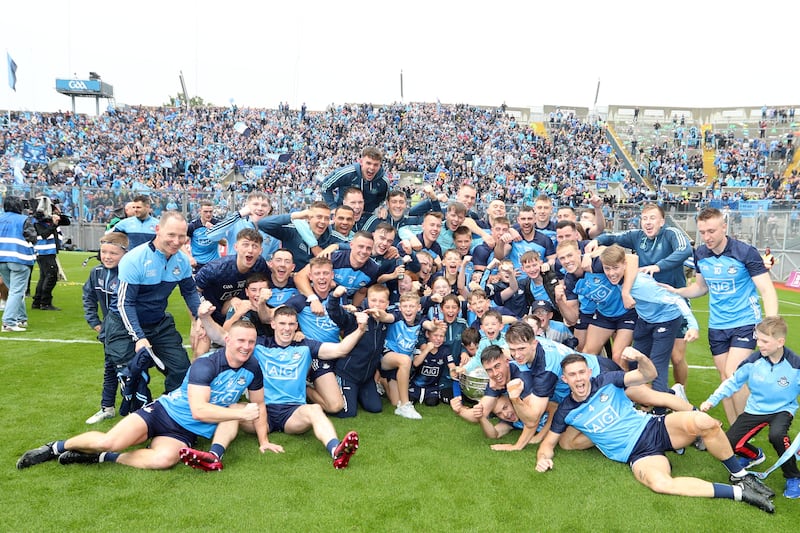TONIGHT may be Hallowe’en but there’s been talk about Christmas for a long time.
Indeed earlier this year, for example, a bunch of turkeys voted for Crimbo to be brought forward, although admittedly it’s because some of them are tired of getting stuffed.
Sorry. Let me explain.
The vote I’m referring to is the Gaelic Players Association’s consultation with its membership, the results of which were revealed last week, reporting that 60 per cent now support a change in the football format to a tiered championship.
Don’t get me wrong, I agree with that majority; but they would need to get a sleigh-load of guarantees – WRITTEN, legally-binding guarantees – in place before they actually agree to such a significant change.
Otherwise they may as well be a Norfolk bronze lining up the sage and onion before pulling its own neck.
Football will probably just opt for two tiers to start with, even though three would be more sensible. Let’s be wacky and call them senior, intermediate, and junior tiers.
However many it goes for, though, it needs to learn lessons from soccer.
It’s almost sacrilegious to some still within the GAA to stay that, but by that I mean take note of the good AND the bad from that code’s alterations in formats.
The GAA needs to ensure that demotion from the ‘A’ Championship to the ‘B’ Championship is NOT like relegation from the English Premier League, where fear of ‘the drop’ is understandable because it’s like falling off a cliff, even with the supposed safety net of parachute payments (if that’s not mixing too many metaphors).
Counties shouldn’t be so desperate to avoid that demotion that they will spend beyond their means and do almost anything on the pitch as long as it helps them to stay up.
Getting back up shouldn’t be nearly as tough as climbing an icy mountain in slippers, with only those aided by financial boosts able to rise. Besides, billionaire benefactors are rare in the GAA, and even Limerick didn’t buy in hurlers.
To find out what it needs to do to avoid the downside of soccer, the GAA only has to look at its own Official Guide, Part One, Chapter One, ‘Aims and Ethos’.
The focus on the Association’s ‘Basic Aim’ is usually on the perceived ‘political’ element’, the declaration that ‘The Association is a National Organisation which has as its basic aim the strengthening of the National Identity in a 32 County Ireland…’
Yet equally, arguably much more, important is the rest of that paragraph: ‘through the preservation and promotion of Gaelic Games and pastimes.’
There’s been plenty said and written – albeit little actually done – about the north/south divide on the island regarding hurling.
If football were to follow hurling’s lead and also opt for a tiered Championship then similar divides would surely ensue, just without the same clear geographical split.
The GPA stated that 90 per cent of hurlers were ‘satisfied that the new competition format allowed for a sufficient number of games against teams of equal standard’.
That may well make sense – but there’s also no doubt that the changes to the hurling Championship format have led to a greater gulf in playing standards between the traditional strongholds in the south and west compared to those above that imaginary line from Galway across to Dublin.
The contrast in terms of TV coverage is like night and day too. How many saw highlights of the Joe McDonagh Cup this year, hurling’s second tier, even though there were many close, exciting matches in that competition?
Hurling below Liam MacCarthy level may as well have been cast into outer darkness in terms of how much attention it gets from most of the national media.
That’s the fate Gaelic football needs to avoid for teams in its lower tier(s).
The National Football League has sent out its own warning.
The decade since the ‘1A, 1B, 2A, 2B’ format was changed back to Divisions 1, 2, 3, and 4 has led to clear demarcations.
Sure, certain counties have moved up and down between the top and bottom flights, and promotion/ relegation affects three-eighths (37.5 per cent) of the participants EVERY year.
Yet the top 10 teams have become fairly clear: Dublin, Kerry, Mayo, Tyrone, Monaghan, Donegal, Kildare, Galway, Cork, and one of Cavan, Roscommon, Derry or Down.
Relegation for a quarter of the teams ensures constant change, but Division One is almost always made up of counties from that baker’s dozen named in the previous paragraph.
What’s more, if you’re not in Division One, you have no chance of winning the Sam Maguire Cup. No Division Two side has achieved that since 2002 – and even then Armagh had earned promotion earlier in the year.
At the other end, Leitrim, London, Waterford, and Wicklow are usually down in Division Four, often joined by some of Antrim, Carlow, Limerick, Longford, and Offaly. Carlow rose up this year, at last, but they’ll hardly climb higher.
What connects most of those counties? Small playing populations and limited resources.
Splitting the Championship into tiers would reinforce those glass ceilings unless, yes, lessons are learned from soccer.
The English Premier League is far from perfect, but at least TV money – both domestic and overseas – and central commercial earnings are divided equally between all 20 teams (although ‘appearance money’ does differ).
If the GAA does move to a tiered football championship it MUST follow suit.
However, the division of prize money should be very different from English soccer.
Champions Manchester City received 20 times as much as bottom-placed West Bromwich Albion last season, making for a difference of almost £37m.
Any gradation in ‘performance payments’ within the GAA should not be anywhere nearly as steep as that if its ethos is to mean anything.
Otherwise, the rich will merely get richer and the poor get poorer, until more and more decide that they literally can’t afford the time and effort to be little more than cannon fodder for ‘the big guns’.
While they’re at it, the GAA should ENSURE, by writing it into any TV contracts, that the lower tier(s) get an agreed, guaranteed amount of airtime, rather than being ignored as the bulk of hurling’s participants are now.
Taking such measures would help ‘the preservation and promotion of Gaelic games’, rather than risk football falling away in certain counties.
Letting the market decide would merely leave the turkeys to suffer their inevitable end-of-year fate.








